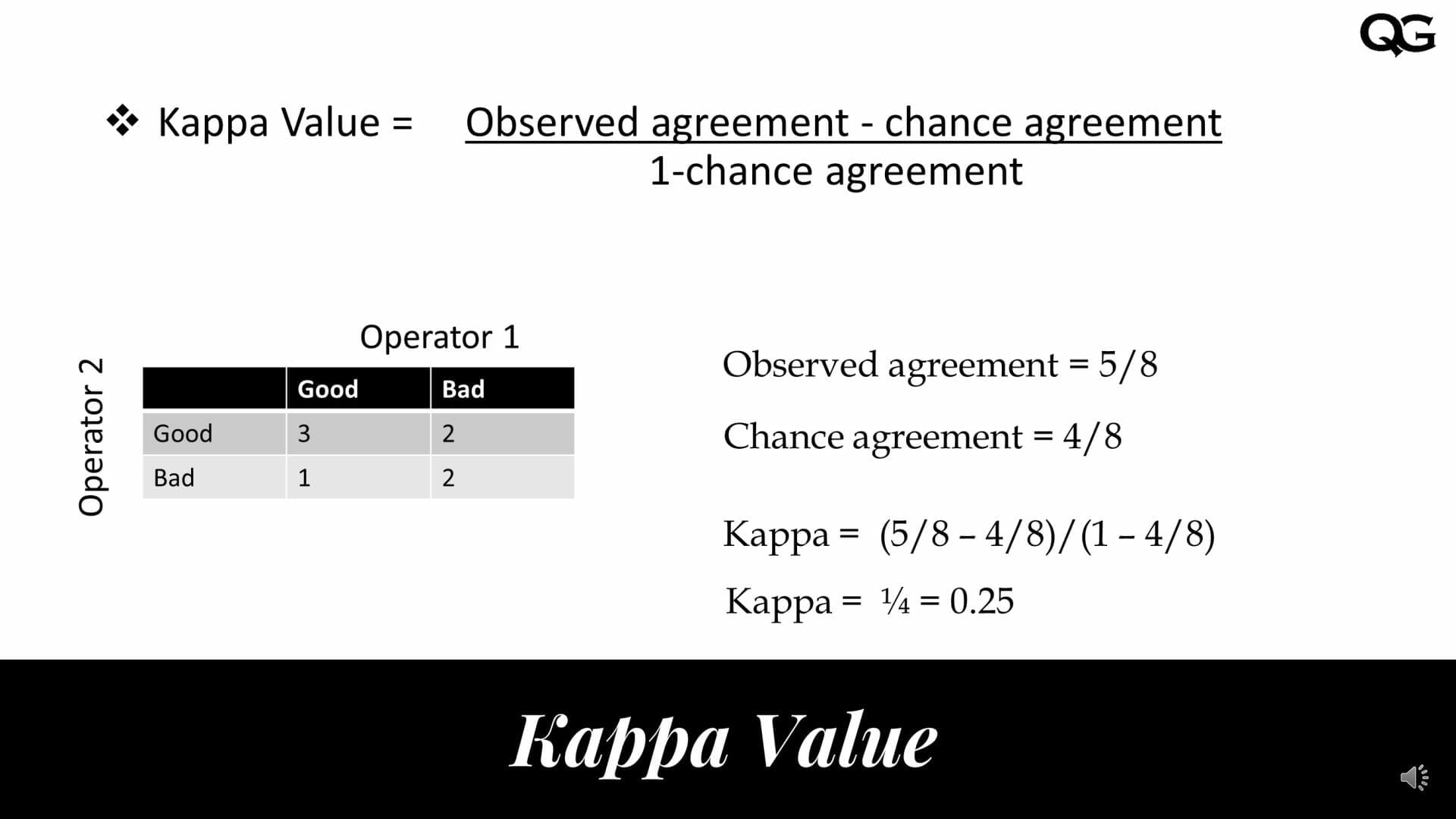

Ensuring the accuracy and consistency of measurements is paramount in quality control. This is where Measurement System Analysis (MSA) comes into play, providing a structured methodology to evaluate the reliability of measurement systems. One of the critical tools within MSA, especially when dealing with categorical or attribute data, is Attribute Agreement Analysis (AAA). This post aims to provide a basic understanding of AAA and its significance in Measurement System Analysis.
Attribute Agreement Analysis is a robust statistical technique utilized to evaluate the agreement or consistency among different appraisers when the measurements are categorical.
Unlike variable measurement systems that deal with continuous data, attribute measurement systems work with discrete, categorical data. Examples of categorical data include classifications like Pass/Fail, Good/Bad, or any other qualitative assessments.
In a manufacturing scenario, for instance, several inspectors might evaluate a batch of products for defects. The assessments are categorical - either 'Defective' or 'Non-Defective.' AAA helps in understanding how consistently these inspectors are making their judgments, and if they are in agreement with a known standard.
The primary goal of AAA is to ensure that the data collected from measurement systems is reliable and trustworthy for decision-making. When different appraisers agree on the evaluation of attribute data, it instills confidence in the measurement system, which is crucial for subsequent quality control and improvement efforts.
Additionally, AAA identifies any inconsistencies or biases among appraisers, paving the way for corrective actions to improve the measurement process. This is vital because inaccurate or inconsistent measurements can lead to incorrect conclusions and adversely affect the quality of products and processes.
Conducting an AAA involves a structured approach where multiple appraisers evaluate a set of parts or items multiple times. The analysis then statistically evaluates the agreement among appraisers, the agreement of appraisers with a known standard, and the repeatability of appraisals.
In this post, we will not go into the details of how to conduct and analyze AAA. The intent of this post is to provide a high-level overview of the Attribute Agreement Analysis (AAA).
We offer a detailed online course on Measurement System Analysis using Minitab that covers the Attribute Agreement Analysis in detail.
One of the pivotal outputs of an Attribute Agreement Analysis is the Kappa value, which provides a statistical measure of the agreement among appraisers, adjusting for the agreement that would occur merely by chance. The Kappa value ranges from -1 to +1. A Kappa value of +1 indicates perfect agreement among appraisers, a value of 0 suggests agreement equivalent to random chance, and a value of -1 implies the agreement weaker than expected by chance (it is rare).
Here's a brief breakdown of interpreting Kappa values:
Apart from the Kappa value, other vital outputs of AAA include:
These outputs collectively provide a comprehensive understanding of the reliability and accuracy of the measurement system when dealing with categorical data. They highlight areas of strength and pinpoint where improvements are necessary to ensure the consistency and validity of the measurement process.
This post touched upon the core aspects of AAA, its significance, how it is conducted, and the key output - the Kappa value. Understanding and effectively leveraging Attribute Agreement Analysis can significantly contribute to the accuracy and reliability of categorical measurements, thereby enhancing the overall quality control and process improvement initiatives in an organization.
For a deeper dive into Measurement System Analysis and Attribute Agreement Analysis, consider enrolling in our detailed online course on Measurement System Analysis using Minitab, which covers the Attribute Agreement Analysis in detail.